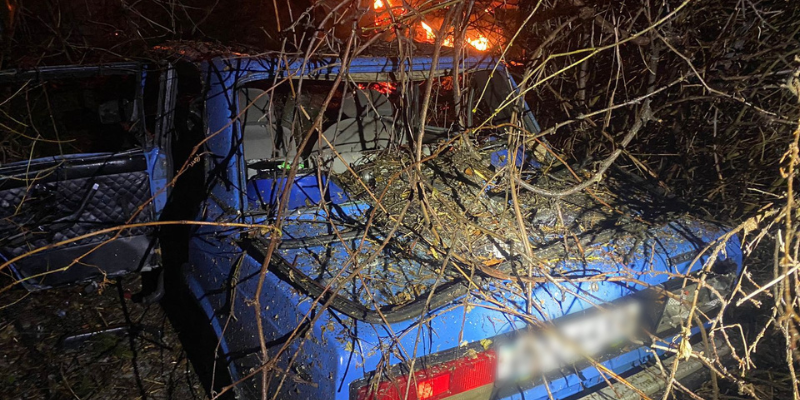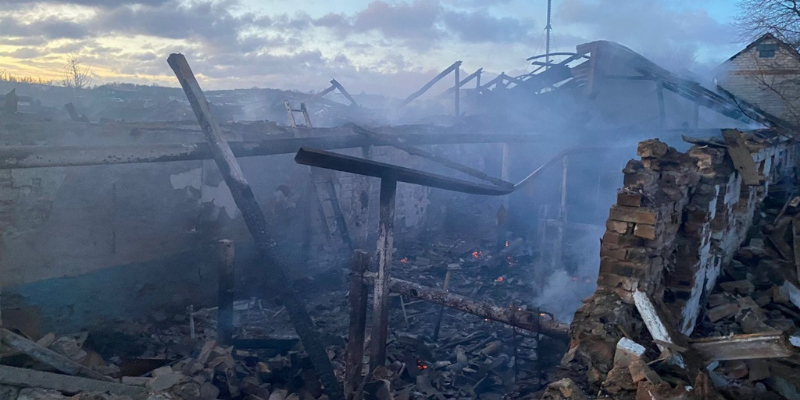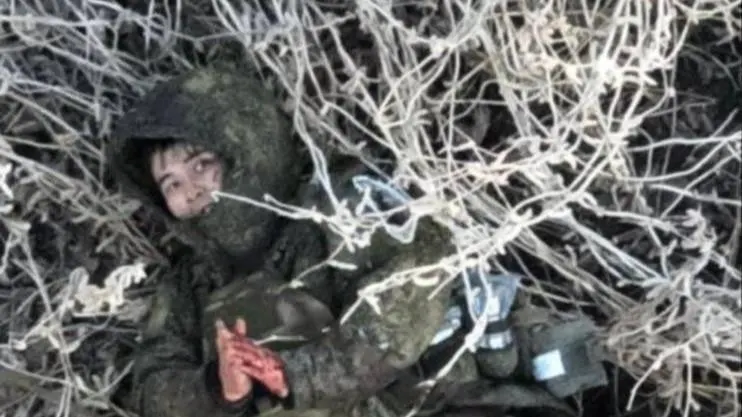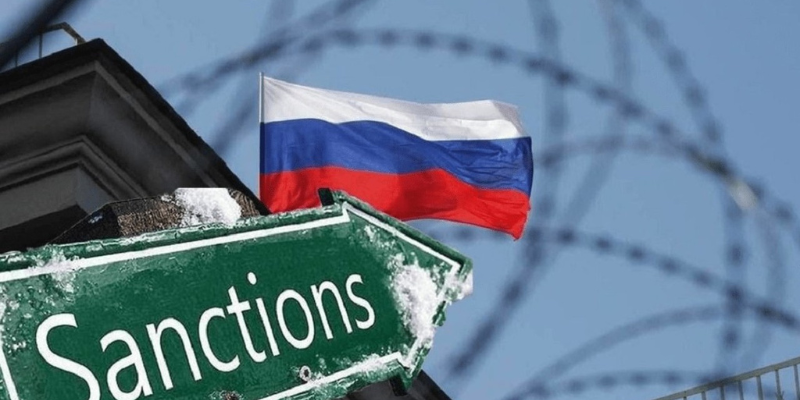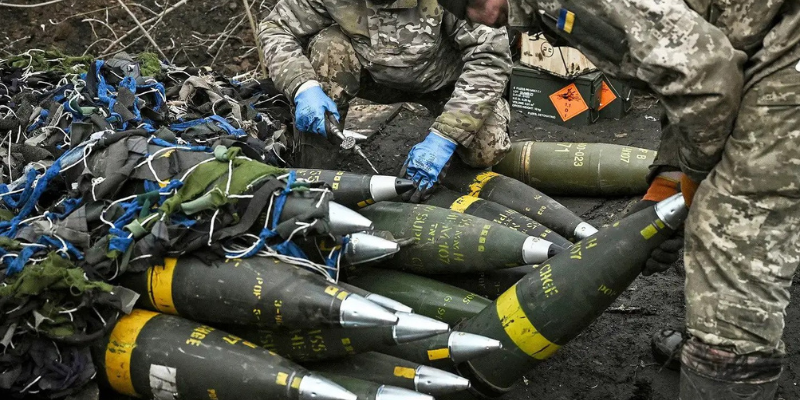High-ranking Russian general killed in Moscow explosion
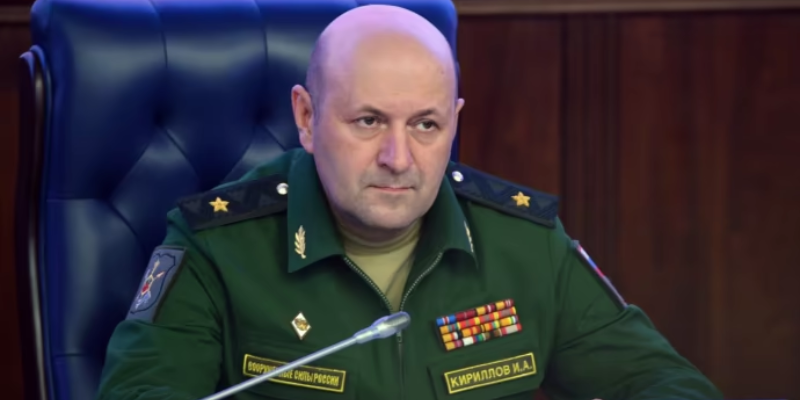
Lt. Gen. Igor Kirillov and his assistant were killed in an explosion in Moscow. The blast occurred near a residential building as they were exiting it. Kirillov was the chief of the Russian Armed Forces’ radiation, chemical, and biological defense troops. The explosion was caused by an explosive device planted in a scooter near the building. The death of Kirillov was confirmed by law enforcement agencies and the Russian Investigative Committee. This incident comes a day after the Ukrainian Security Service (SBU) filed criminal charges against in absentia. The details of the explosion and the motive behind it are still uncertain. Russian Telegram channels and the Russian propaganda outlet RT reported the incident.
SOURCESymbolic number of the Day
More than 16,000 Ukrainian civilians are being held captive by Russia, according to the Ukrainian Parliament Commissioner for Human Rights. Only 168 people have been released so far. The Geneva Conventions and international humanitarian law do not include provisions for prisoner exchanges for civilians, only for prisoners of war. However, the Ukrainian side has managed to secure the release of 168 civilians using a separate mechanism. The human rights ombudsman believes that Russian forces are holding journalists captive, torturing and killing them to silence media personnel in occupied territories of Ukraine.
SOURCEWar in Pictures
Russian military personnel conduct multiple strikes on the town of Kupiansk and the village of Nechvolodivka, resulting in significant damage and casualties. Preliminary data suggests that the enemy used Uragan multiple-launch rocket systems (MLRS) and drones against civilians. In Nechvolodivka, a house was damaged when Russians attacked the village with an FPV drone. In the Kharkiv regional town of Kupyansk, the Russian army shelled the town with Uragan MLRS, damaging 15 residential buildings and causing a fire at a medical facility. As a result, one civilian male was killed, and another was pronounced dead at a hospital after sustaining injuries from an explosion. Investigative teams, forensic experts, and explosive experts are currently at the scene. Criminal proceedings have been initiated for the violation of laws and customs of war.
SOURCEVideo of the Day
In Cherkasy region, border guards shoot down an enemy Shahed drone during a night attack. According to the official social media channel of the State Border Guard Service, the drone’s wreckage fell into the Dnipro River without causing any damage to infrastructure or civilians.
SOURCEInstitute for the Study of War (ISW) report

Russian leader Vladimir Putin’s continued fixation on the Russian Oreshnik ballistic missile and Russia’s non-nuclear deterrents suggests that the Kremlin may be searching for off-ramps from its continued nuclear saber-rattling narrative. Putin addressed the Russian Ministry of Defense (MoD) board on Dec. 16 and discussed Russian military developments in 2024 and Russia’s military goals for next year.
Putin stated that Russia is developing military capabilities and technologies alongside its nuclear triad and emphasized that the Oreshnik ballistic missile is Russia’s “latest powerful weapon,” of which Russia will soon serialize production.
Putin also notably claimed that if Russia were to use the Oreshnik in a “complex manner” in tandem with other non-nuclear munitions, the resulting strike would be “comparable in power to the use of nuclear weapons.”
Putin noted that the Oreshnik does not have a nuclear payload and therefore does not create nuclear contamination, emphasizing that the Oreshnik’s non-nuclear nature “is a very important element when deciding what means of armed struggle” Russia will employ.
The Kremlin dictator has previously lauded the technical specifications of the Oreshnik ballistic missile, including its comparison to a nuclear weapon or a meteorite in terms of the damage it can cause.
Putin’s recent emphasis on the purported power of Oreshnik is notable and suggests that the Kremlin may seek an off-ramp from the intense nuclear sabre-rattling it has employed thus far in the war. Putin’s Dec. 16 address, his statements at the Collective Security Treaty Organization’s (CSTO) Security Council in Astana, Kazakhstan, on Nov. 28, and his speech to the Defense Ministry on Nov. 22 all appear to be trying to establish the Oreshnik as the bastion of Russia’s non-nuclear deterrent.
Russia has repeatedly invoked the threat of nuclear retaliation in order to force Ukraine and the West into self-deterrence, but Ukrainian and Western actions have challenged the Kremlin’s nuclear narrative every time Moscow has employed it, constantly undermining Russia’s self-defined thresholds for nuclear use.
The Washington-based Institute for the Study of War (ISW) has previously assessed that there is nothing particularly new about the Oreshnik’s capabilities, so Putin is likely extolling its technical specifications in order to create fear and uncertainty about the damage the Oreshnik can inflict and to pressure Ukraine’s partners to push Ukraine to limit its strikes against Russia out of fear that he will actually retaliate.
Putin likely introduced the Oreshnik as a new element in the Kremlin’s wider reflexive-control toolkit as the Kremlin increasingly comes to terms with the fact that Putin’s unwillingness to follow through on hints of nuclear threats is devaluing them such that he must find a rhetorical off-ramp in order to maintain its credibility in the international information space.
SOURCEWar heroes
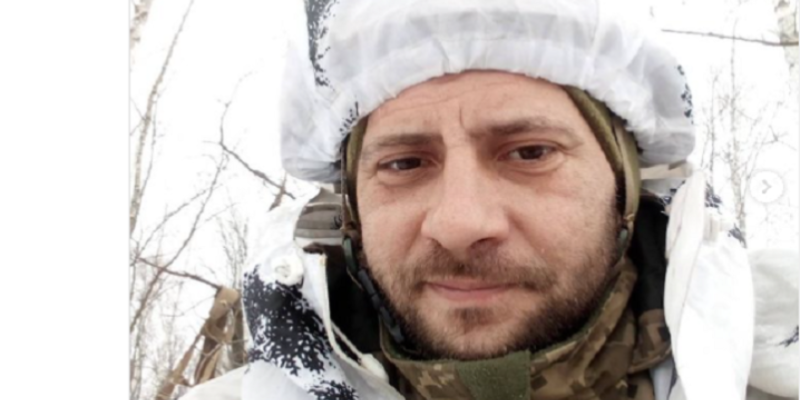
Oleksiy Dovbush, 35, a soldier with the call sign of Volunteer, was killed on July 30, 2024, during a combat mission near the village of Bilohorivka, Luhansk region. A drone strike led to his death. Dovbush was born in the village of Panivtsi, Ternopil region. He graduated from the Kamianets-Podilskyi National University and received a degree in mathematics and computer science.
He was well-rounded. He liked cars and technology the most. He always helped others, knew how to support and find a common language with anyone. Before the war, he was engaged in the installation and design of playgrounds.
From the first day of the full-scale invasion, he became a volunteer by evacuating people from Kherson and Kharkiv regions, and helped deliver medicine and food to the Donetsk region. Later, he joined the ranks of the Ukrainian Air Assault Forces. He served in the engineering support group of the engineering company of the 81st airmobile brigade.
“He was a true patriot, a hero, he always said he had to be there and help the guys. Always smiling and positive. He was the kindest and most sincere. We had so many dreams and plans together. He believed in Ukraine, in victory to the last. I always knew that he would never leave his comrades. He was always the first to go and take responsibility for everything. His last act was also like that: he went forward and covered his comrades. They managed to retreat, but my husband, unfortunately, did not…” said Alina, his widowed wife.
Dovbush was buried on the Walk of Fame at the main cemetery in Chernivtsi.
*Oleksiy Dovbush’s story on the Heroes Memorial – a platform for stories about the fallen defenders of Ukraine.
SOURCELatest news
- British Intelligence: Russia has lost more than 3,000 main battle tanks since 2022
- The Economist: Ukraine loses half of previously captured areas in Russia’s Kursk Oblast and switches to defense there
- NATO fighter jets escorted Russian military aircraft seven times during the week
- Starmer: Britain wants to ensure Ukraine has strongest possible position in 2025
- US Department of State: The U.S. would regard North Korean troops entering Ukraine as escalation
- Zelenskyy: Russians are trying to hide North Korean losses

